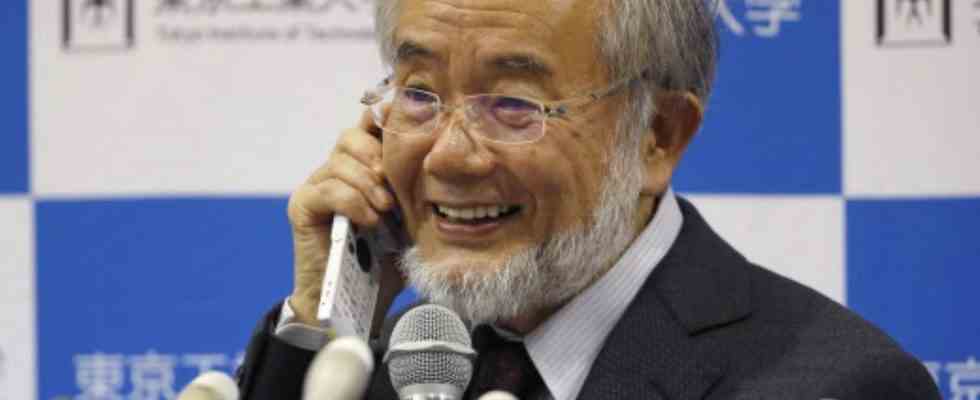On social networks, the practice of fasting has good press. It would help to purify the body… and sometimes even the spirit. On a Facebook post from June 2022 and went viral again this week, a user recommends “abstain from eating and drinking for sixteen hours”. “This process should be repeated for a period of time in order to reach the organism for maximum utilization and to prevent diseased cells from reacting. It is recommended to repeat the hunger and thirst process two to three days a week,” he continues.
A technique that would allow the body to cleanse itself and eliminate all diseased cells. It would work against many diseases, both for cancers and Alzheimer’s, but also against diabetes. Eventually, the dying cells will have recycled, the publication explains. All this demonstration would have been scientifically proven by the Nobel Prize winner Yoshinori Ohsumi. What is it really? 20 Minutes takes stock.
FAKE OFF
On October 3, 2016, biologist Yoshinori Ohsumi and professor at the Tokyo Institute of Technology was awarded the Nobel Prize for Medicine for his work on autophagy, a process allowing cell renewal. “Mutations in autophagy genes can cause disease and the autophagic process is implicated in several conditions such as cancer and neurological diseases”, explained the specialist at the time.
Autophagy really appeared in the 1960s, but it was Yoshinori Ohsumi’s research that really shed light on gene mutations and its benefits for certain diseases. According to the Inserm website, autophagy allows cells to “clean up”. This kind of selective sorting in our body could prove useful when the cell lacks nutrient supply, for example during a fast. “This mechanism will allow it to survive by recycling its own constituents, worn out or not essential, to produce what it absolutely needs while waiting for better days”, confirms Inserm.
But when you get older, autophagy can no longer work over the years and this can lead to neurodegenerative, infectious, cancerous, cardiovascular, metabolic diseases, quotes Inserm. “The decrease in the efficiency of autophagy could for example contribute to the accumulation of deleterious protein aggregates, an anomaly typical of several neurodegenerative diseases such as Alzheimer’s or Parkinson’s disease”, adds the site. The autophagy process could thus allow certain cells to better maintain themselves.
“eat yourself”
To better understand the practice, 20 minutes has met the Francophone Autophagy Club (CFATG). “It is above all a cellular mechanism that almost all of our cells are capable of carrying out. Autophagy consists of eating oneself and recycling cellular components”, summarizes its secretary general Frédéric Gros. Even more simply, our body could be compared to a car. “Sometimes there are parts that don’t work, we remove them, we recycle them and we add another one”, continues our interlocutor.
Only, the viral post on Facebook seems to make a shortcut between the practice of fasting and autophagy. Historically, fasting was one of the first methods used to establish autophagy. But autophagy is not just about fasting. “Autophagy is one mechanism that is induced under fasting conditions, but it is far from the only one. This is true on the scale of a cell, it is also true on the scale of an organism”, summarizes Frédéric Gros.
A supposed link, but not demonstrated
Today, autophagy is still in the clinical trial phase, “in humans and in animals”, underlines the CFTAG. “One of the beneficial effects of fasting is through autophagy, it’s assumed. But this is not always clearly demonstrated. Its benefits are numerous, it could limit inflammation and even promote a change in metabolism.
However, our interlocutor remains cautious. In the case of clinical trials, the practice of fasting is always closely monitored by doctors. According to different diseases, the prescribed time may be different. “It’s something promising, but you shouldn’t initiate them alone,” warns the CFTAG secretary general.

